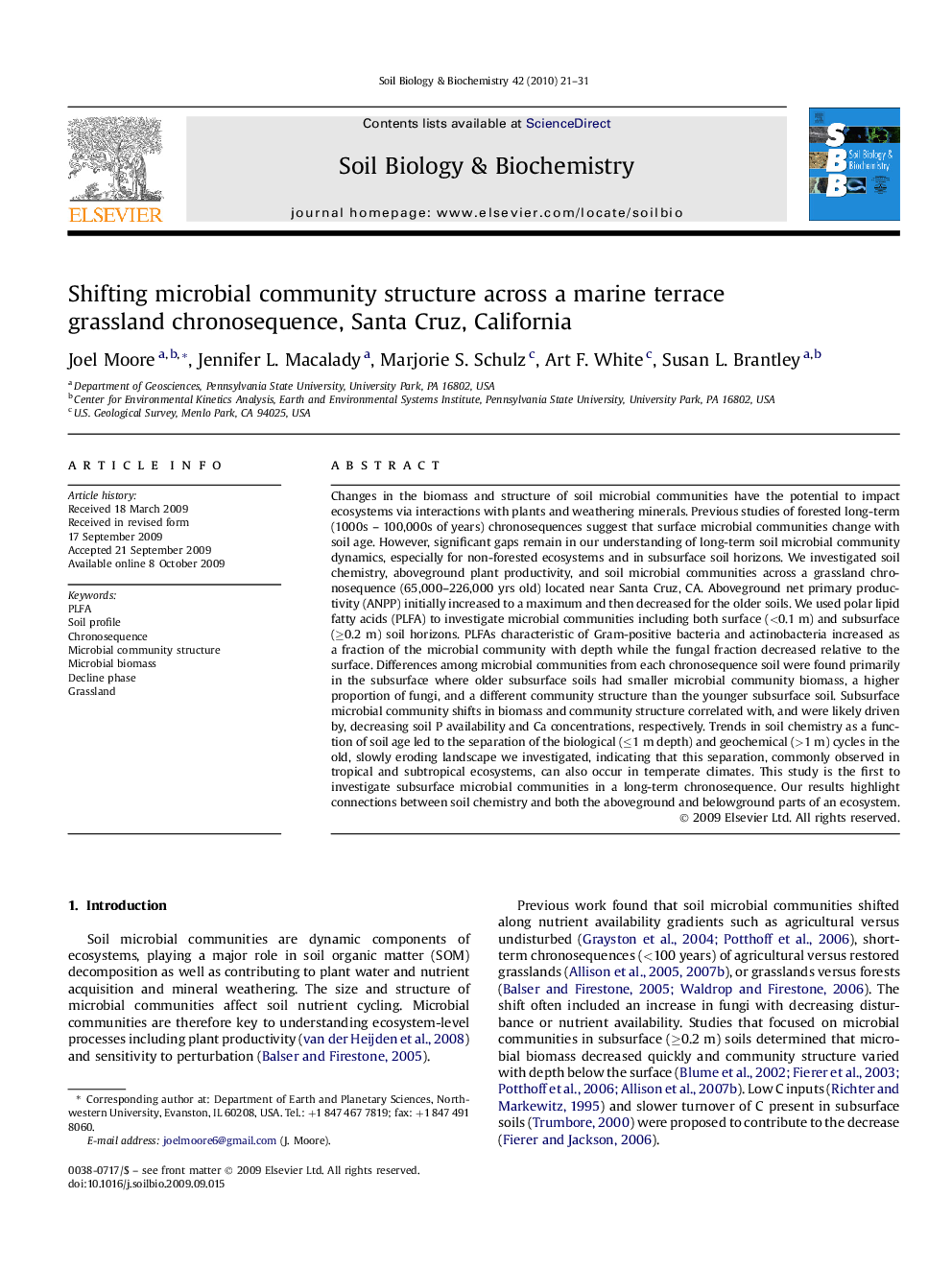| کد مقاله | کد نشریه | سال انتشار | مقاله انگلیسی | نسخه تمام متن |
|---|---|---|---|---|
| 2025269 | 1069990 | 2010 | 11 صفحه PDF | دانلود رایگان |

Changes in the biomass and structure of soil microbial communities have the potential to impact ecosystems via interactions with plants and weathering minerals. Previous studies of forested long-term (1000s – 100,000s of years) chronosequences suggest that surface microbial communities change with soil age. However, significant gaps remain in our understanding of long-term soil microbial community dynamics, especially for non-forested ecosystems and in subsurface soil horizons. We investigated soil chemistry, aboveground plant productivity, and soil microbial communities across a grassland chronosequence (65,000–226,000 yrs old) located near Santa Cruz, CA. Aboveground net primary productivity (ANPP) initially increased to a maximum and then decreased for the older soils. We used polar lipid fatty acids (PLFA) to investigate microbial communities including both surface (<0.1 m) and subsurface (≥0.2 m) soil horizons. PLFAs characteristic of Gram-positive bacteria and actinobacteria increased as a fraction of the microbial community with depth while the fungal fraction decreased relative to the surface. Differences among microbial communities from each chronosequence soil were found primarily in the subsurface where older subsurface soils had smaller microbial community biomass, a higher proportion of fungi, and a different community structure than the younger subsurface soil. Subsurface microbial community shifts in biomass and community structure correlated with, and were likely driven by, decreasing soil P availability and Ca concentrations, respectively. Trends in soil chemistry as a function of soil age led to the separation of the biological (≤1 m depth) and geochemical (>1 m) cycles in the old, slowly eroding landscape we investigated, indicating that this separation, commonly observed in tropical and subtropical ecosystems, can also occur in temperate climates. This study is the first to investigate subsurface microbial communities in a long-term chronosequence. Our results highlight connections between soil chemistry and both the aboveground and belowground parts of an ecosystem.
Journal: Soil Biology and Biochemistry - Volume 42, Issue 1, January 2010, Pages 21–31